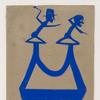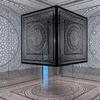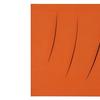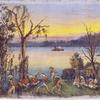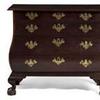John Singer Sargent Bravura Painting Mrs. Carl Meyer and her Children Focus of Exhibition at the Jewish Museum
- NEW YORK, New York
- /
- August 15, 2016
Few paintings by John Singer Sargent better exemplify his artistic prowess as a portraitist than Mrs. Carl Meyer and her Children. Seductive and revealing, this bravura painting captures the world of a privileged English family of Jewish origin during the late Victorian era. On view at the Jewish Museum in New York from September 16, 2016 through February 4, 2017, John Singer Sargent’s Mrs. Carl Meyer and Her Children will highlight this remarkable portrait - contextualizing it with other family portraits, ephemera, documents, personal correspondence, and caricatures.
On loan from the Tate Britain, it has been over ten years since the painting was on view in the United States. The work depicts Adèle Meyer, a wealthy British philanthropist, well-known society hostess, and political activist, with her children, Elsie Charlotte and Frank Cecil.
When he painted the Meyer family in London in 1896, Sargent was the most sought after society portraitist in Britain and the United States. Within four years of its creation, the large-scale work (79 ½” x 53 ½”) was shown in three venues to great popular and critical acclaim. Sargent’s painting was a highlight of the Royal Academy’s exhibition in 1897. It was subsequently shown at the Copley Society of Boston in 1899, where it was considered one of the artist’s greatest achievements. In 1900, the picture was awarded a medal of honor at the Exposition Universelle in Paris. Sargent carefully staged his stylishly dressed sitters against 18th century French furniture and architectural elements. The animated Mrs. Meyer is posed just to the right of center at the edge of a canapé. She wears a dress of satin, velvet, and organdy which may have been supplied by Worth in Paris. A rope of oriental pearls drapes across her prominently featured bodice, touching the tips of her shoes. Sargent’s worms-eye view troubled some critics and left much room for sly commentary. One caricature in Punch (1897) in which the two children struggle to keep their mother from falling off the sofa, was described as “a sort of a drawing room tobogganing exercise.”
In this work, as in many of Sargent’s portraits, the artist builds upon European masters such as Titian, Velázquez, and Gainsborough in his brilliant reinterpretation of grand manner portraiture.
Mrs. Carl Meyer (the former Adèle Levis, c. 1861-1930) was the daughter of Julius Levis, a wealthy European rubber manufacturer, and his wife, Emily Levis (nee Hecht). Adèle Levis married the banker Carl Ferdinand Meyer in 1883. He was born in Hamburg and became a naturalized British subject in 1877. He was a foreign emissary for the London branch of the Rothschild bank, representing their interests in some of the major financial negotiations of the time, and later became London chairman of the De Beers Company as well as director of the National Bank of Egypt. Carl Meyer was created Baronet of Shortgrove in 1910. A vivacious hostess and leader of the artistic society of the day, Lady Meyer was passionately interested in music, theatre, and opera, as well as social causes including women’s suffrage, conditions for female factory workers, and support for underprivileged families.
John Singer Sargent’s Mrs. Carl Meyer and Her Children is organized by Norman L. Kleeblatt, Susan & Elihu Rose Chief Curator, the Jewish Museum.


